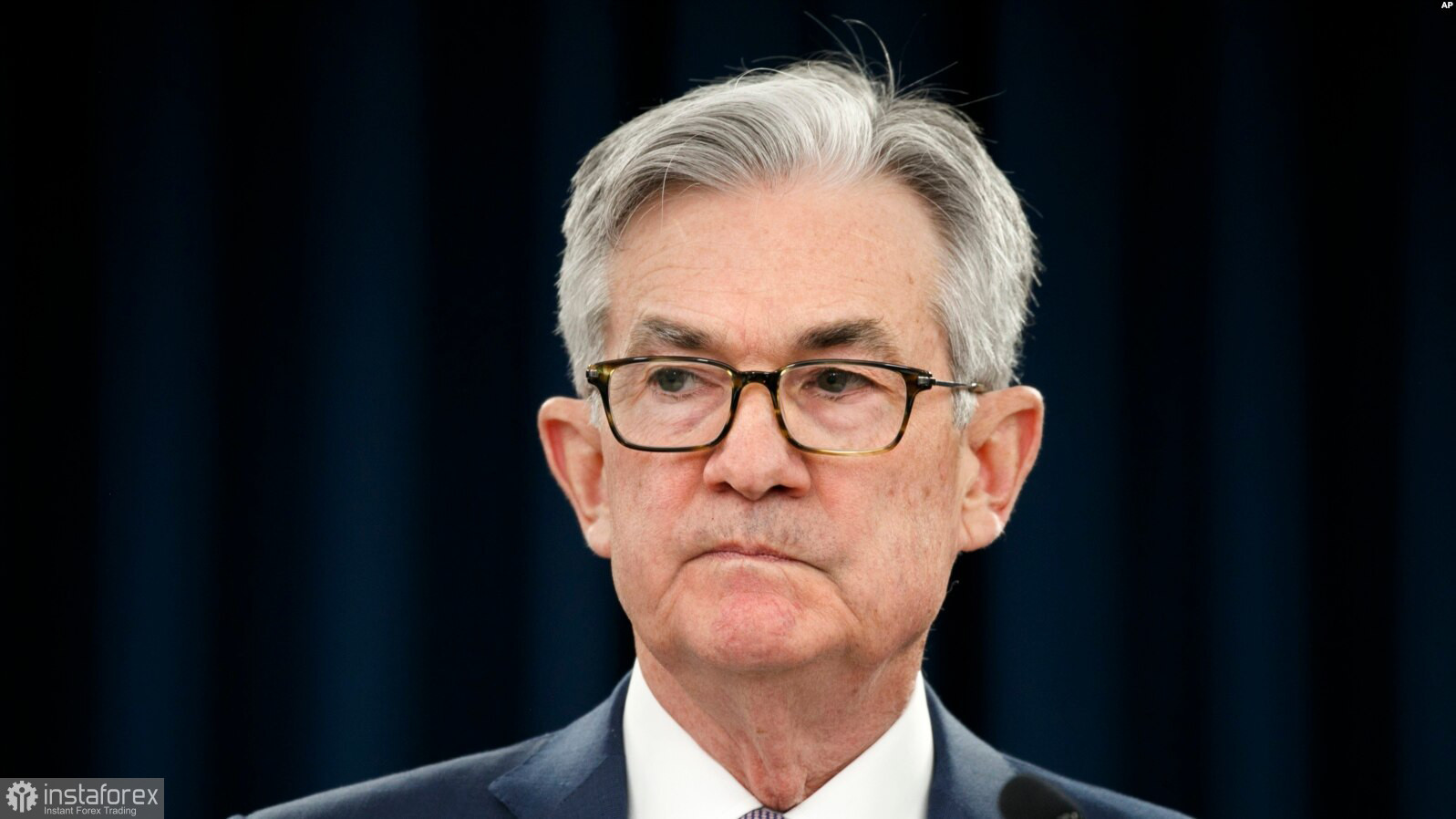
The key US stock market indices - Dow Jones, NASDAQ, and S&P 500 - ended Tuesday with new growth. However, this growth still does not play a special role and does not affect the overall picture of the situation in any way. Thus, everything is still going according to plan. According to the global correctional plan. There were no important publications in the USA yesterday. Reports on industrial production and retail sales did not provoke a reaction of traders on the dollar, therefore, most likely, they did not affect stock indexes and stocks in any way. But yesterday there was a speech by Fed Chairman Jerome Powell, which is always interesting. We did not expect any new, important statements from Powell, since the Fed's plans are now as clear as day. The rate will increase at an average pace, and a quantitative tightening program will begin in the summer, which will mean the withdrawal of excess liquidity from the economy. These plans should support the dollar and put pressure on the stock market. With the dollar, everything is not as clear now as it was a month ago. There is reason to assume that the foreign exchange market has already worked out all possible rate increases and is not ready to continue buying the US currency. In the coming days, it should become clear whether this hypothesis is true. But the stock market is getting more complicated. He usually does not have the habit of working out any events in advance. Therefore, the correction may persist throughout 2022.
What did Powell say to the markets? By and large, the only thing is the willingness to take "more aggressive steps to curb inflation." However, what Powell means by "more aggressive steps" is not completely clear. Jerome has repeatedly made it clear that he does not support a too rapid rate increase (that is, by 0.75%), therefore, most likely, we are talking about the same two increases of 0.5% at meetings in June and July. Powell also said that to reduce inflation, the Fed is ready to reduce the pace of economic growth. Not too negative values, but minimally positive ones. He also said that if inflation slows down after the Fed's actions, then softer measures of further tightening will be considered until the moment when inflation returns to 2%. The head of the Fed also noted that the "neutral rate level" is a rather ephemeral concept, in reality, it does not exist. Risks to the economy and inflationary pressure due to the pandemic situation in China and the geopolitical conflict in Ukraine remain high. Powell also made it clear that the 0.2% decline in inflation in April is not "convincing", more solid signals are needed that the consumer price index has begun to slow down. We rate Powell's statements as "medium-hawkish." So far, he has not signaled that the Fed is ready to move to "aggressive" measures.
 English
English 
 Русский
Русский Bahasa Indonesia
Bahasa Indonesia Bahasa Malay
Bahasa Malay ไทย
ไทย Español
Español Deutsch
Deutsch Български
Български Français
Français Tiếng Việt
Tiếng Việt 中文
中文 বাংলা
বাংলা हिन्दी
हिन्दी Čeština
Čeština Українська
Українська Română
Română

